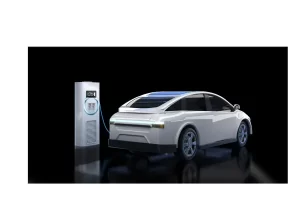As the world transitions to sustainable energy, electric vehicles (EVs) are increasingly becoming a popular choice for consumers. This surge in interest reflects a broader commitment to reducing carbon emissions and fostering a cleaner environment. However, with this growth comes a vital need for understanding the complexities of EV charging, particularly the various types of charging plugs. This guide aims to demystify EV plug types, providing a comprehensive overview that empowers both new and existing EV owners to navigate the charging landscape effectively.
The Importance of Knowing EV Plug Types
Understanding EV plug types is crucial for several reasons:
- Compatibility: Different EVs use different plug types. Knowing what plug your vehicle requires ensures you can charge it without hassle.
- Charging Strategy: Each plug type corresponds to specific charging speeds and scenarios. Understanding these helps you plan your charging needs effectively, whether at home or on the road.
- Enhanced Experience: Knowledge of plug types contributes to a smoother EV ownership experience, reducing anxiety about range and charging availability.
What Are EV Plugs?
Definition and Role
EV plugs are electrical connectors that allow electric vehicles to draw power from charging stations. They are designed to ensure safe and efficient transfer of electricity, critical for the health of the vehicle’s battery and the overall charging experience.
Overview of Charging Levels
Charging levels categorize the electrical supply and dictate how quickly an EV can charge. The three primary levels include:
- Level 1 Charging: This uses a standard 120-volt outlet, typically found in homes. It provides the slowest charging rate, suitable for overnight charging.
- Level 2 Charging: This operates on a 240-volt outlet and is commonly used in both residential and public charging stations. It offers faster charging times, making it ideal for daily use.
- DC Fast Charging: Operating at 400 volts and above, DC Fast Charging allows for rapid energy transfer, making it the best option for long trips where quick charging is needed.
Common EV Plug Types
Type 1 (SAE J1772)
Description and Compatibility
The Type 1 plug, standardized as SAE J1772, is widely used in North America. Its five-pin design supports single-phase AC charging, making it compatible with many mainstream EVs such as the Nissan Leaf and Chevrolet Bolt.
Typical Use Cases
Type 1 plugs are predominantly used for residential Level 2 charging stations and public charging infrastructure. They are perfect for daily commuters who need to recharge overnight.
Visual Identification
The Type 1 connector features a rounded shape with five pins arranged in a circular pattern, making it easily identifiable at charging stations.
Type 2 (Mennekes)
Description and Compatibility
The Type 2 plug, also known as the Mennekes connector, is the standard in Europe. It can accommodate both single-phase and three-phase AC charging, offering flexibility for various charging setups.
Common Use Cases
Type 2 connectors are often found in public charging stations across Europe and are compatible with many EVs, including those from brands like BMW, Audi, and Volkswagen.
Advantages and Features
The Type 2 connector is designed to handle higher power outputs, allowing for faster charging times. It also includes a locking mechanism to secure the plug during charging, ensuring a safe connection.
CCS (Combined Charging System)
Description and Compatibility
The Combined Charging System (CCS) integrates a Type 2 connector for AC charging with two additional pins for DC fast charging. This combination allows for a versatile charging experience.
Advantages for Fast Charging
CCS is increasingly popular due to its capability to provide rapid charging, significantly cutting down the time it takes to recharge an EV. Many new electric vehicles, such as the Ford Mustang Mach-E and BMW i3, come equipped with CCS compatibility.
Common Vehicles That Use CCS
The CCS plug is standard among many new EV models from manufacturers like Volkswagen, BMW, and Ford. Its widespread adoption makes it a practical choice for many EV owners.
CHAdeMO
Description and Compatibility
CHAdeMO, short for “CHArge de MOve,” originated in Japan and is a fast-charging standard used primarily by Nissan and Mitsubishi vehicles. It is one of the earliest fast-charging protocols established.
Origin and Usage in Japan
CHAdeMO was developed to support high-speed charging, particularly for electric buses and light-duty vehicles. Its popularity remains strong in Japan, where many charging stations still utilize this standard.
Advantages and Vehicles That Use It
While CHAdeMO offers fast charging capabilities, its adoption in the U.S. is less prevalent compared to CCS. However, it remains a reliable option for Nissan Leaf owners and others using compatible models.
Tesla Connectors
Overview of Tesla’s Proprietary Connectors
Tesla has developed its own proprietary charging connectors, which differ from standard plug types. Tesla vehicles use a unique connector compatible with the extensive Tesla Supercharger network.
Compatibility with Other EVs
Tesla’s connectors are not universally compatible with other EVs, but adapters are available to allow non-Tesla vehicles to use Tesla charging stations. However, limitations exist, and charging speeds may vary.
Unique Features of Tesla Charging Stations
Tesla Supercharger stations are strategically located along major travel routes, making long-distance travel more convenient for Tesla owners. These stations can deliver up to 250 kW, allowing for rapid recharging—often providing 80% charge in approximately 30 minutes.
Charging Levels Explained
Level 1 Charging
Overview of Voltage and Current
Level 1 charging utilizes a standard 120-volt outlet, providing a low charging rate. This method typically adds about 2 to 5 miles of range per hour, depending on the vehicle.
Typical Charging Times
Due to the lower power output, charging a fully depleted EV battery can take 12 to 24 hours. While this may seem lengthy, it is sufficient for many users who charge overnight.
Ideal Usage Scenarios
Level 1 charging is best suited for EV owners who have short daily commutes and can plug in their vehicles overnight. It’s also a good option for those without access to dedicated charging stations.
Level 2 Charging
Overview of Voltage and Current
Level 2 charging operates on a 240-volt system, providing a more robust power supply. This method delivers 10 to 60 miles of range per hour, depending on the vehicle and charger specifications.
Benefits and Charging Times
Charging times can vary, but Level 2 charging typically takes 4 to 8 hours to fully charge an EV, making it an excellent choice for both home and public charging.
Common Applications
Level 2 chargers are commonly found in residential settings, public parking garages, workplaces, and shopping centers. Many EV owners choose to install Level 2 chargers at home for faster, more efficient charging.
DC Fast Charging
Overview of Voltage and Current
DC Fast Charging operates at high voltages (400 volts and above), allowing for significantly faster charging times. This technology is ideal for long-distance travel, enabling drivers to recharge quickly during road trips.
Charging Speed and Technology
DC Fast Charging can deliver up to 80% battery capacity in as little as 30 minutes, depending on the vehicle and charger. This rapid charging capability makes it a game-changer for EV owners on the go.
Locations and Infrastructure
DC Fast Chargers are often strategically located along highways and in urban areas, making them essential for long-distance travel. Networks such as Electrify America, ChargePoint, and others are expanding their DC fast charging infrastructure to support growing EV adoption.
Choosing the Right Plug Type
Factors to Consider
When selecting an EV plug type, consider the following key factors:
- Vehicle Compatibility: Confirm that your vehicle is compatible with the plug type you intend to use. Manufacturers typically provide this information in their specifications.
- Charging Infrastructure: Evaluate the availability of charging stations in your area and along your travel routes. Use apps and websites that provide real-time data about charging station locations and availability.
- Personal Charging Needs: Assess your charging habits, including daily mileage and whether you have access to home charging. This will help determine the best charging solution for your lifestyle.
Tips for New EV Owners
- Research Local Charging Stations: Familiarize yourself with local charging options and the types of plugs available. This will help you avoid potential compatibility issues.
- Consider Home Charging Options: If feasible, install a Level 2 charger at home. This upgrade can significantly enhance your charging efficiency, allowing you to recharge your vehicle overnight.
- Plan for Long Trips: Utilize tools and apps to map out charging stations along your route. Pay particular attention to stations offering DC Fast Charging for quicker stops.
Resources for Finding Charging Stations
Numerous resources can assist you in locating charging stations:
- Mobile Apps: Applications like PlugShare, ChargePoint, and EVgo provide real-time data on nearby charging stations, including user reviews, availability, and plug types.
- Manufacturer Websites: Many EV manufacturers offer tools to help owners find compatible charging stations based on their specific vehicle models. This can streamline the charging process.
- Government and Non-Profit Resources: Websites such as the U.S. Department of Energy’s Alternative Fuels Data Center offer comprehensive information about charging infrastructure across the country.
Future of EV Plugs
Trends in EV Charging Technology
As the EV market evolves, several emerging trends are shaping the future of charging technology:
- Wireless Charging: Innovations in inductive charging technology could eliminate the need for physical plugs, making charging even more convenient.
- Ultra-Fast Charging: Developments in ultra-fast charging solutions are expected to reduce charging times significantly, further enhancing the practicality of EVs for everyday use.
- Battery Technology Improvements: Advances in battery technology will not only increase energy density but also reduce charging times, making EVs even more attractive to consumers.
Potential Standardization of Plug Types
The industry is gradually moving towards a more standardized approach to EV plug types. This shift could simplify the charging experience for consumers, allowing for a single plug type to be universally accepted across all EVs.
Impact of New Technology on EV Adoption
As charging technology improves, more consumers are likely to consider making the switch to electric vehicles. The convenience of faster charging and the widespread availability of charging stations will play a critical role in increasing EV adoption rates.
Conclusion
Understanding EV plug types is essential for both new and seasoned EV owners. By familiarizing yourself with the various plug types, charging levels, and available infrastructure, you can make informed decisions about your EV charging needs. Whether you’re charging at home, at work, or on the go, having a solid grasp of these concepts will enhance your overall experience and ensure you get the most out of your electric vehicle.
As you embark on your EV journey, stay informed about the evolving landscape of electric vehicle charging. Share your experiences and knowledge within the EV community to contribute to a more sustainable future.




